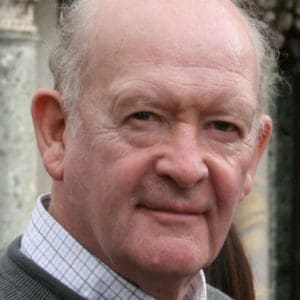Editor’s note: David Torkington continues his series on prayer today. To read part 24, click here and to start at the beginning with part 1, click here.
Before the 1960’s mental prayer took place behind the closed doors of a personal prayer life. However, as the charismatic movement began to spread amongst Catholics, communal charismatic style prayer became more and more popular, not least because of unusual phenomena, from speaking in tongues to slaying in the spirit. When criticized as a deviation from the normal Catholic prayer tradition, they continued forward. Far from being new, they claimed their way of worship was widely practiced in the early Church, as verified by anyone who reads St Paul’s first letter to the Corinthians, chapter twelve. They were of course quite right. The sort of communal prayer they practiced was commonplace in the early Church and necessary for the establishment of Christianity.
Charismatic Christians in the Early Church
Almost every town, city and village of the early Church would have its communities of charismatic Christians, not dissimilar to today. These charismatic communities were the spiritual powerhouses, the faith factories in which their old faith was refashioned, reworked and refitted into the new, for the vast majority of them were Jews. They used the prayers, the psalms, the chants, the hymns and the canticles they already knew, adapting them where necessary and eventually creating new prayers, hymns, and music to express what now superseded their old liturgies. This new liturgy was but the external expression of the new worship that Christ gave them. This was the worship in spirit and in truth, the same worship that Christ himself offered, the offering of himself to the Father. Deep down this worship depended, not just on pure and contrite hearts as the prophets had insisted, but hearts so fully cleansed that they could be united with the heart of the Risen One in whom they all lived and moved and had their being.
The Second Baptism of Fire
This worship would only rise to its fulfillment if their hearts could be so purified that the second baptism of fire could prepare them, not just to be united with the heart of Christ, but to beat in unison with his. It would be in this new form of worship that human loving would be suffused with the divine to enable new creatures to be formed in the image and likeness of Christ. It was the charismatic fervor in these communities that animated and inspired the first Christian novices and supercharged them with the determination to journey onwards. This journey would lead them through a profound purification that would prepare them for union with Christ in his mystical body and then into his mystical contemplation of the Father. The first Christians came to see that this above all was the purpose of the charismatic prayer that was so commonplace at the beginning, because almost everyone, apart from the first Apostles and their earliest disciples, were beginners. It gave the enthusiasm, the inspiration and the strength for the journey ahead where they would be reformed and refashioned into the image and likeness of the One who would possess them and work through them that his Kingdom would come on earth.
Charismatic Catholics Today
If we ‘fast forward’ we see this same form of Charismatic prayer that mushroomed in the Catholic Church in the 1960s is still strong in many places today. It is an important movement that has borne much fruit. However, in order to lead its members to the depths of prayer, it must also encourage daily mental prayer. In this way, propelled by the love generated in the first fervor of the beginning of the mystic way, those within the movement would be better equipped to advance further on the spiritual journey.
In some places, it may be observed that Charismatic groups cling to the emotional experiences characteristic of the movement. Alone, this is insufficient to generate the depths of love with leads into the mystic way with its power to purify and refine and thence onward to mystical contemplation. If they do not learn this deeper way, they will sadly remain undernourished, like spiritual adolescents. Therefore the leaders themselves would do well to understand the mystical way of prayer, in order to guide those who find themselves drawn more and more to profound contemplative stillness, as will naturally happen when one has given themselves to the practice of daily mental prayer. Competent spiritual directors will lead charismatics into mystical contemplation where the beautiful charismatic foundation of their spiritual life will develop beyond all expectations.
Where this is lacking, there can be a danger of substituting false forms of contemplative prayer such as centering prayer, mantras, and other similar forms of pseudo-mystical prayer. Not only will this not lead to mystical contemplation as detailed by St. Teresa of Avila and other Christian mystics, it actually prevents the action of the Holy Spirit. Consequently, the purification that can alone enable a person to be united with Christ and with his contemplation of the Father is prevented permanently. We all must learn from the mystical spirituality of the first Christians how to progress in prayer life after our first enthusiasm has run its course, or we will condemn ourselves to a bogus form of mystical contemplation that leads nowhere, but round and round in circles, and deprive the Church of the mystics, the prophets and the saints that are so desperately needed in the Church today.
In other places, the charismatic movement has laid a more solid foundation for authentic spiritual renewal. The early fervor may have waned, but in its place, there is a genuine desire for deeper prayer and good spiritual direction. One observes that many of the most influential Catholic institutions and some of the religious orders experiencing tremendous growth in fact spring out of the original fire of the charismatic renewal.
My heart’s desire is that all of those who have experienced the blessing of the renewal, and all of those desiring deeper intimacy with God, be launched further in the depths of His heart through the richness of the Carmelite tradition. We should take as our guide in this journey two great spiritual writers made doctors of the Church for their unrivaled understanding and teaching on mystical theology. I am referring of course to St. John of the Cross and St. Teresa of Avila. Just half an hour reading the first nine chapters of The Dark Night of the Soul would make it clear why the time always comes for a beginner to move forward into mystical prayer. It could be a life-changing half-hour for anyone ready for real spiritual development.
Photo by Edwin Andrade on Unsplash





